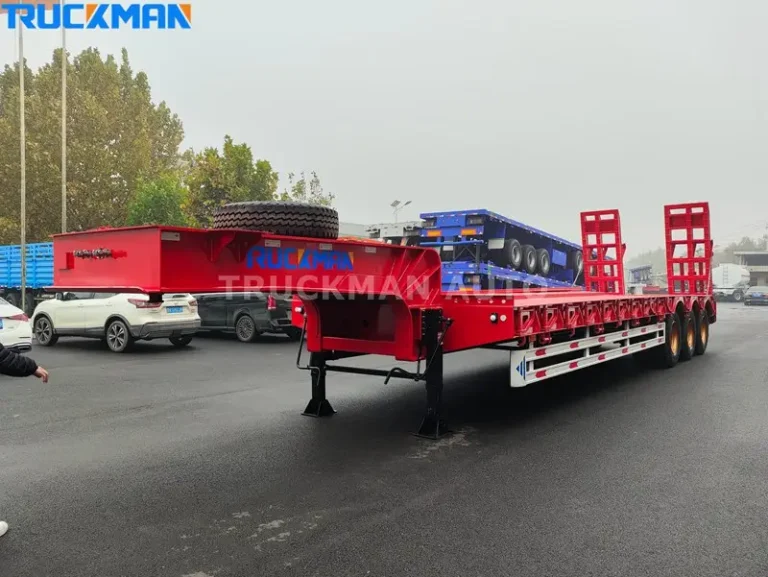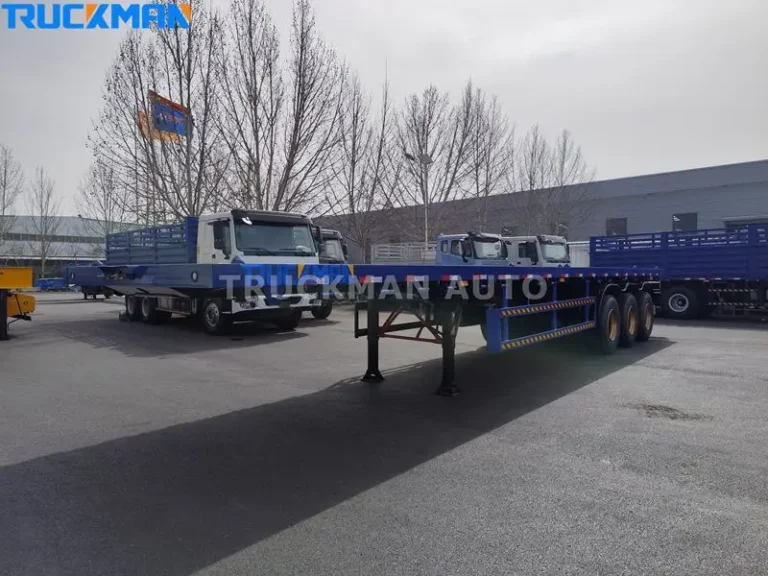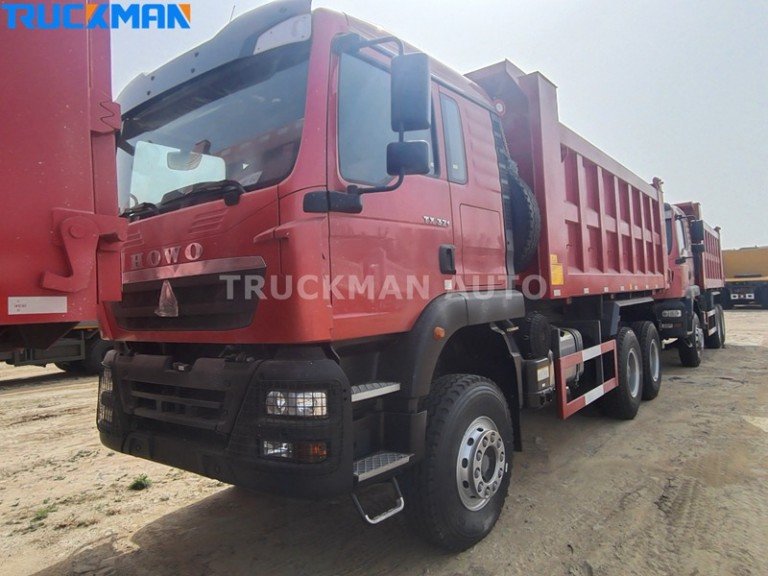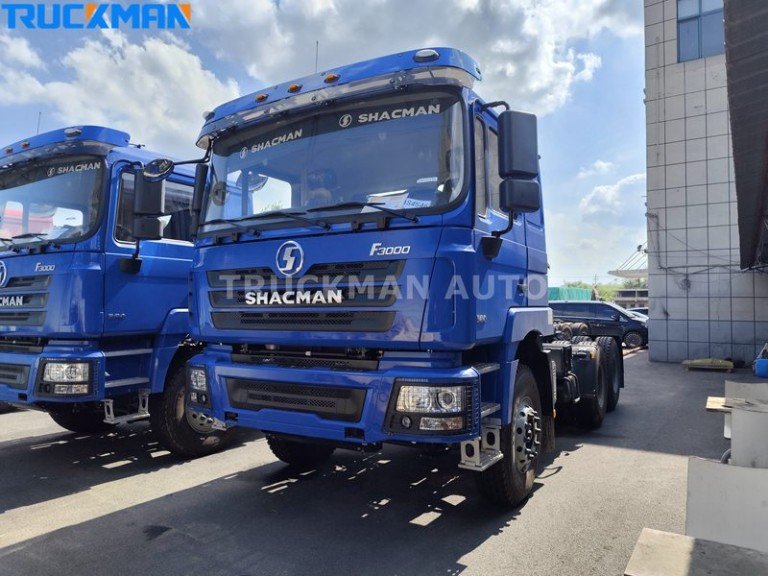Container semi-trailers are vital in the transportation and logistics industry. They are the backbone for moving goods over long distances. These trailers are designed to carry large ocean containers. They are vital for intermodal transportation, which moves cargo from ship to truck or train. Their versatility and carrying capacity allow for a smooth global supply chain.
Truckman is a renowned supplier of containerized semi-trailers. We specialize in providing solutions that meet the tough needs of the logistics industry. Our trailers can handle huge loads while maintaining safety and efficiency. You may be moving freight across borders or distributing locally. Our container semi-trailers offer reliable performance.
In this article, we’ll explore the load capacity of container semi-trailers. This is a key factor in ensuring safe and legal transportation. Understanding load capacity is critical to logistics planning and maintaining smooth operations. We’ll discuss the factors that affect load capacity. We’ll also cover standard load capacities for various trailer types. And we’ll cover the impact of overloading.
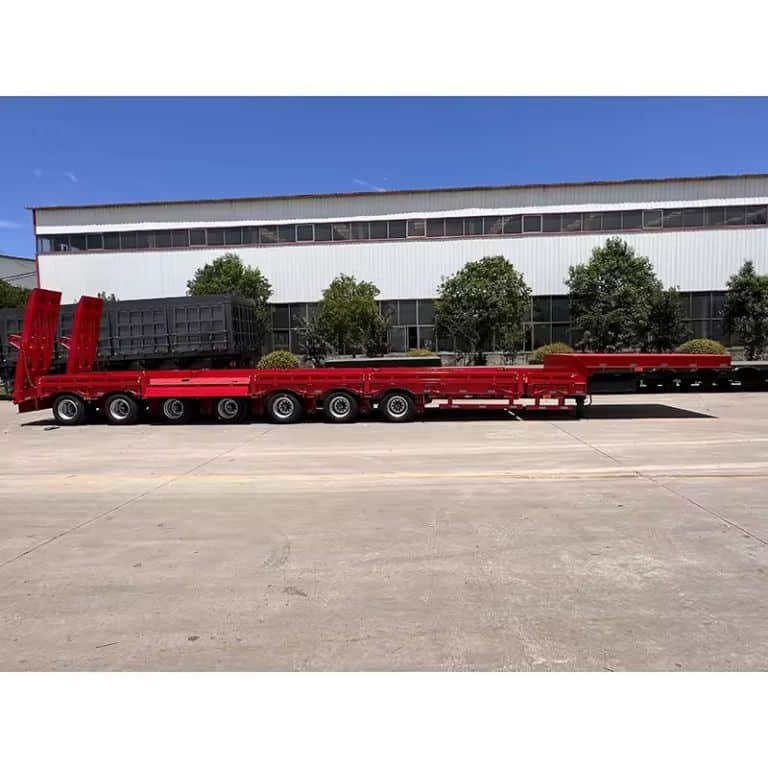
Table of Contents
Understanding Container Semi Trailers
A container semi trailer is a specialized type of trailer. It is designed to carry shipping containers. They are commonly used in freight and shipping. These trailers are vital in intermodal transportation. They allow containers to move smoothly between ships, trains, and trucks. This versatility enables efficient transport of goods over long distances. It reduces handling times and helps global trade.
Container semi trailers are crucial in the logistics chain. They offer a strong and secure way of moving large volumes of goods. They are built to support heavy loads while maintaining stability and durability on the road. Container semi trailers are important in freight transport. They are designed with specific features to ensure safe and efficient operations.
Common Uses of Container Semi Trailers
Container semi trailers are used for a wide range of purposes, including:
Intermodal Transportation: They move shipping containers from ports to inland centers. They often use rail or road.
Long-Distance Freight: Transporting goods across vast distances, sometimes across international borders.
Regional and Local Distribution: Delivering goods to warehouses, distribution centers, or final destinations.
Different Types of Container Semi Trailers
There are many types of container semi trailers. Each is designed for specific applications and container sizes.
Flatbed Trailers: They have a flat, open platform. It can carry many types of cargo, including shipping containers. Flatbed trailers are often used for non-standard or oversized containers.
Skeletal Trailers: These trailers have a skeletal frame. It is designed to securely hold standard shipping containers. It reduces weight and provides stability. Skeletal trailers are commonly used for standard 20-foot and 40-foot containers.
Chassis Trailers: Chassis trailers are made for carrying shipping containers. They come with twist locks or other ways to keep the containers secure during transit. They are ideal for intermodal transport, allowing quick loading and unloading of containers.Understanding how to lock containers to a semi-trailer is especially important for the effective use of chassis trailers. These trailers are ideal for intermodal transport as they allow for quick loading and unloading of containers, thus increasing transport efficiency.
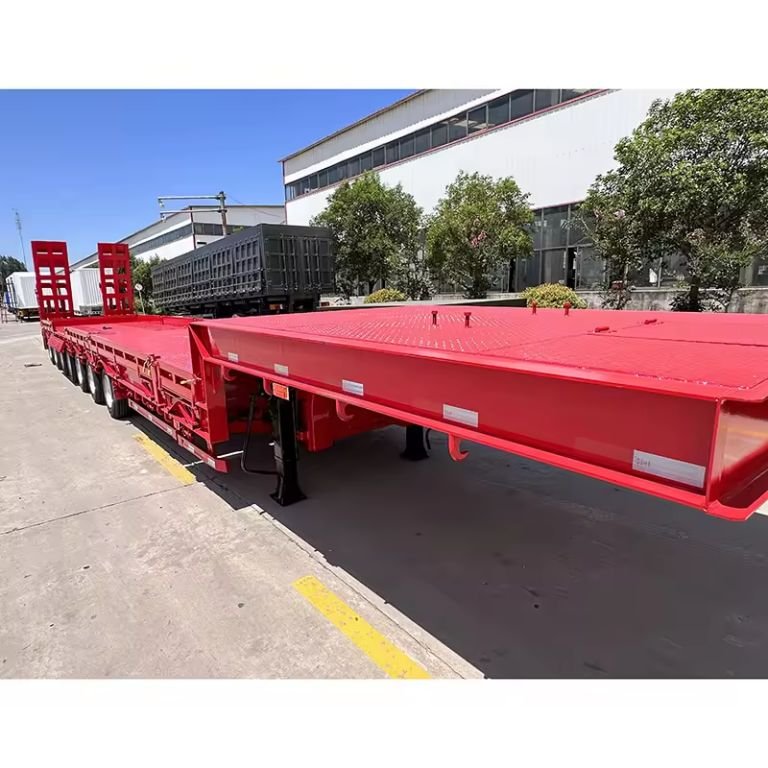
Factors Influencing Weight Capacity
The load capacity of a container semi-trailer is a key factor in logistics and transportation. It determines how much cargo the trailer can safely carry. Several key factors affect load capacity. They impact the trailer’s strength and durability. At Truckman, a specialized trailer manufacturer, we consider all these factors when designing our container semi-trailers. We focus on quality construction. We use the best axle setups and reliable suspensions. We use quality materials. This all ensures that our trailers can handle large loads without compromising safety or performance.
Trailer Design and Construction
The design and construction of a container semi trailer play a significant role in its weight capacity. Key aspects include:
Frame Design: A robust frame provides structural support and distributes weight evenly. Trailers with reinforced frames can typically handle higher loads.
Weld Quality: High-quality welds are essential for maintaining structural integrity, especially under heavy loads.
Bracing and Cross-Members: Enough bracing and cross-members add stability and strength. They let the trailer carry more weight without sacrificing safety.
Axle Configuration
The axle configuration impacts weight capacity. It does this by deciding how the load is spread across the trailer. Common configurations include:
Tandem Axles: A tandem axle uses two axles. It allows for more weight than a single axle. It provides better stability and weight distribution.
Tri-Axles: Tri-axle trailers have three axles. They can carry heavier loads because they have better weight distribution and load-bearing capacity.
Axle Spacing: Proper axle spacing ensures good load distribution. This affects the trailer’s stability and capacity.
Suspension System
The suspension affects the trailer’s ability to handle weight. It also impacts ride quality. Key factors include:
Type of Suspension: Air suspension provides a smoother ride. It can adjust to varying loads. Leaf spring suspension offers durability and needs less maintenance.
Shock Absorbers: Good shock absorbers reduce vibrations and stress on the trailer. They make the trailer last longer and stay stable.
Weight Distribution: A good suspension system spreads the weight evenly. This prevents excessive stress on parts of the trailer.
Materials Used in Manufacturing
The materials used to construct the trailer influence its weight capacity and durability. Key considerations include:
High-Strength Steel: Trailers made with strong steel tend to have higher weight capacities. This is because of the material’s durability and ability to bear loads.
Aluminum Components: Some trailers use aluminum for some parts. This reduces weight but keeps strength.
Corrosion Resistance: The materials resist corrosion. They make the trailer last longer and stay strong in many conditions.
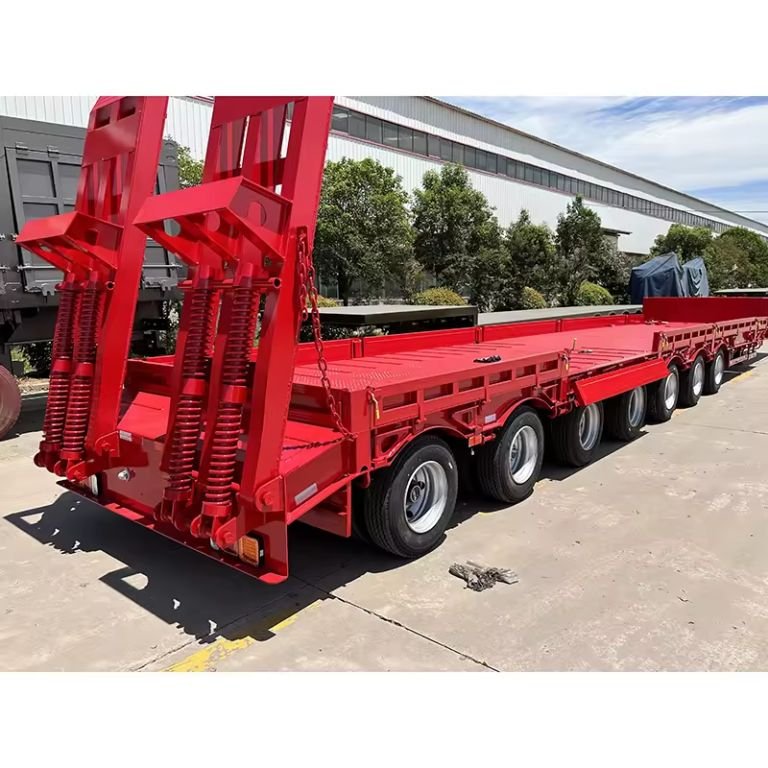
Standard Weight Capacities of Container Semi Trailers
Container semi trailers are designed to carry shipping containers. These containers come in various sizes and shapes. These trailers have a weight limit. It depends on many factors. These include the trailer’s design, axle setup, and regulations.
20-Foot Container Trailers
Typical Weight Capacity: A standard 20-foot container trailer can hold 20,000 to 30,000 kilograms (about 44,000 to 66,000 pounds). This range can vary depending on the trailer’s construction, axle setup, and suspension system.
Common Applications: 20-foot trailers are commonly used for lighter loads or shorter transportation distances. They are ideal for regional and local distribution.
40-Foot Container Trailers
Typical Weight Capacity: A standard 40-foot container trailer has a high weight capacity. It is often 30,000 to 40,000 kilograms (about 66,000 to 88,000 pounds). This higher capacity is due to the longer length and additional axles in some configurations.
Common Applications: 40-foot trailers are widely used for long-distance freight and intermodal transport. They offer more cargo space for heavier loads.
Tri-Axle and Tandem-Axle Configurations
Tandem-Axle Trailers: Tandem-axle trailers have two axles. They are designed to carry moderate to high loads. They can handle loads ranging from 20,000 to 40,000 kilograms (approximately 44,000 to 88,000 pounds), depending on other factors.
Tri-Axle Trailers: Tri-axle trailers have three axles. They can carry heavier loads because of better weight distribution. They can usually hold 30,000 to 50,000 kilograms (about 66,000 to 110,000 pounds).
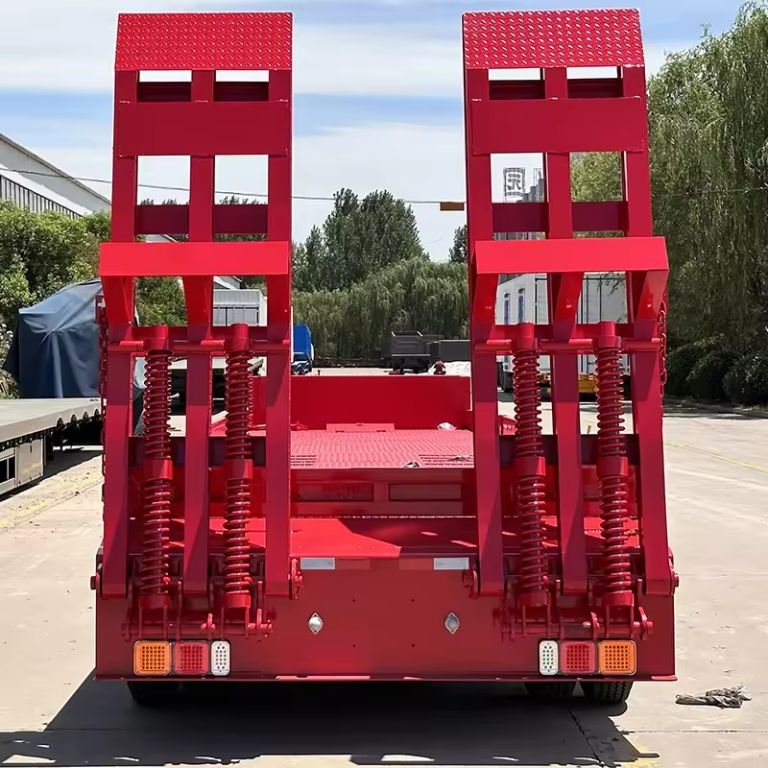
How to Determine the Weight Capacity of a Specific Trailer
Finding the weight capacity of a specific container semi trailer is crucial. It ensures safety, compliance with regulations, and efficient transportation. Follow these steps to accurately determine the weight capacity of a container semi trailer:
Check the Trailer's Data Plate for Load Ratings
Every trailer has a data plate or identification tag, usually located on the trailer’s frame or near the front of the trailer. This plate contains vital information about the trailer’s specifications, including:
Gross Vehicle Weight Rating (GVWR): The trailer can carry a maximum total weight. This weight includes the trailer’s weight, cargo, and any added equipment.
Gross Axle Weight Rating (GAWR): The maximum weight each axle can bear. This helps determine load distribution and ensures compliance with axle load limits.
Check the data plate. It gives a quick overview of the trailer’s load ratings. It tells you its weight capacity.
Consider the Gross Vehicle Weight Rating (GVWR)
The Gross Vehicle Weight Rating (GVWR) is the total weight capacity of the trailer. It includes the trailer’s weight, cargo, and any other parts. To determine the trailer’s payload capacity, use the following formula:
Payload Capacity = GVWR – Trailer’s Empty Weight:This formula provides the most weight of the cargo you can load onto the trailer. It keeps you within the GVWR limit.
Consult the Trailer Manufacturer's Specifications
The Container trailer manufacturer provides detailed specifications for each trailer model. These include its weight capacity, axle setup, and other technical details. Check the Truckman’s manual or website. Look for the trailer’s weight limit and any special notes.
Importance of Weight Capacity in Logistics
Knowing a trailer’s weight limit is vital for logistics. It is key for planning transport. It sets the maximum load a trailer can carry safely. It guides decisions on cargo distribution, route planning, and obeying rules. Here’s why knowing the weight capacity is crucial and the consequences of exceeding it.
Safety Risks
Overloading a container semi trailer poses significant safety risks. Excessive weight can:
Compromise Trailer Stability: A trailer can carry more than its capacity. But, this can make it unstable. It may sway or tip during transit.
Increase Braking Distance: Heavier loads require more distance to stop, increasing the risk of collisions.
Stress Suspension and Axles: Overloading can cause suspension failure or axle breakage, leading to accidents.
Affect Vehicle Handling: Overloaded trailers are harder to control. They pose risks to the driver and other road users.
Legal Consequences
Exceeding weight capacity can lead to legal penalties and compliance issues, including:
Fines and Penalties: Authorities often impose fines for overloading, which can be substantial.
License Suspension: Repeated violations can result in suspension or revocation of commercial licenses.
Detention and Delays: Checkpoints may detain overloaded trailers. This causes delivery delays and extra costs.
Insurance Issues: Overloading may void insurance coverage. This leads to more liability in a crash.
Equipment Damage
Overloading can cause extensive damage to the trailer and associated equipment, resulting in:
Structural Damage: Too much weight can bend the trailer’s frame. It can also cause cracks, which lead to costly repairs.
Premature Wear and Tear: Overloaded trailers experience accelerated wear on tires, brakes, and suspension components.
Reduced Lifespan: Frequent overloading shortens the lifespan of the trailer, impacting return on investment.
How Truckman Helps Clients Understand and Manage Weight Capacity
At Truckman, we put safety first. We help our clients understand and manage the weight limits of their container semis. We do this by:
Providing Accurate Specifications: Our trailers come with detailed specs. They include Gross Vehicle Weight Rating (GVWR) and Gross Axle Weight Rating (GAWR). These specs guide clients in load management.
Offering Guidance on Regulations: We guide local and international transportation regulations. We ensure clients understand the law and avoid penalties.
Customizing Trailers for Specific Needs: We offer customized container semi trailers. They are designed to meet specific weight capacity requirements. They provide flexibility and reliability.
Promoting Regular Maintenance: We encourage regular maintenance and inspections. They keep trailers in good condition and reduce the risk of damage, ensuring safety.
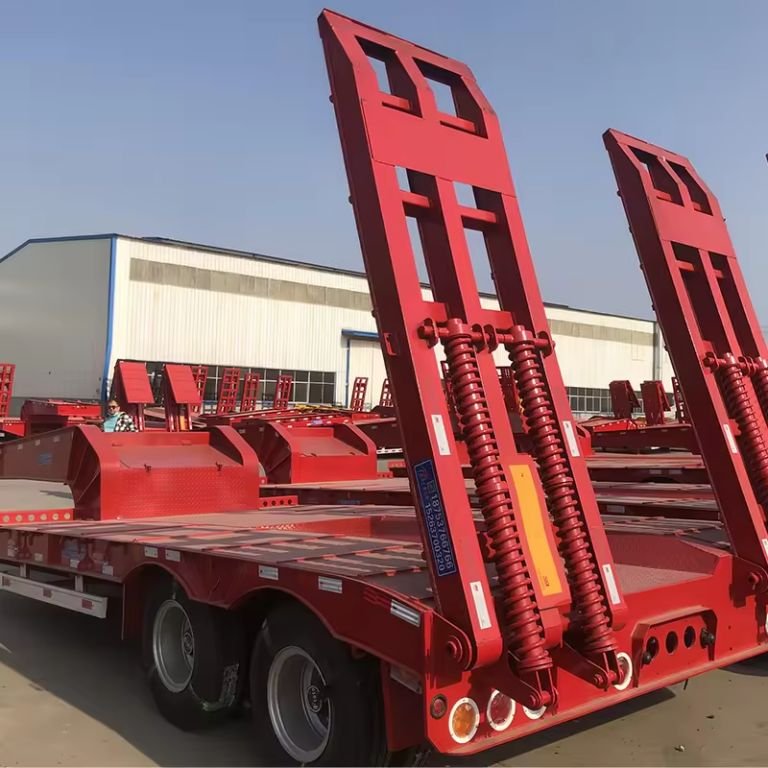
Conclusion
In this article, we’ve discussed the importance of understanding the weight capacity of a container semi trailer and the factors that influence it. These factors include trailer design, axle setup, and suspension. We explored weight limits for different types of trailers. We also looked at how to find a specific trailer’s weight limit. We also highlighted overloading’s implications. They include safety risks, legal penalties, and equipment damage.
Adhering to weight capacity limits is essential for safety, compliance, and efficient transportation. At Truckman, we are committed to providing high-quality container semi trailers. We also offer expert advice on transportation logistics. We aim to help clients move goods safely and legally. This ensures smooth operations and happy customers.
FAQ
The typical weight capacity of a container semi trailer varies. It depends on the type of trailer and its setup. Standard weight capacities include:
20-foot container trailers: Generally, 20,000 to 30,000 kilograms (approximately 44,000 to 66,000 pounds).
40-foot container trailers: Typically, 30,000 to 40,000 kilograms (approximately 66,000 to 88,000 pounds).
Tri-axle configurations: Can support loads up to 50,000 kilograms (approximately 110,000 pounds).
To avoid overloading a container semi trailer, follow these steps:
Check the Data Plate: Find the data plate on the trailer. It has the Gross Vehicle Weight Rating (GVWR) and Gross Axle Weight Rating (GAWR).
Calculate the Payload Capacity: Subtract the trailer’s empty weight from the GVWR to get the maximum cargo capacity.
Distribute the Load Evenly: Proper load distribution across the axles helps keep balance. It also prevents overloading specific areas.
Follow Regulations: Understand local and international weight limits to ensure compliance with legal requirements.
Use Weigh Stations: Use weigh stations. They check the weight and axle load before you start a journey.
Overloading a container semi trailer can lead to several legal consequences, including:
Fines and Penalties: Authorities often impose fines for overloading, which can be substantial.
License Suspension: Repeated overloading violations may result in suspension or revocation of commercial licenses.
Vehicle Detention: Overloaded trailers may be held at weigh stations or checkpoints. This causes delays and extra costs.
Insurance Issues: Overloading may void insurance coverage, leading to increased liability in case of accidents.

